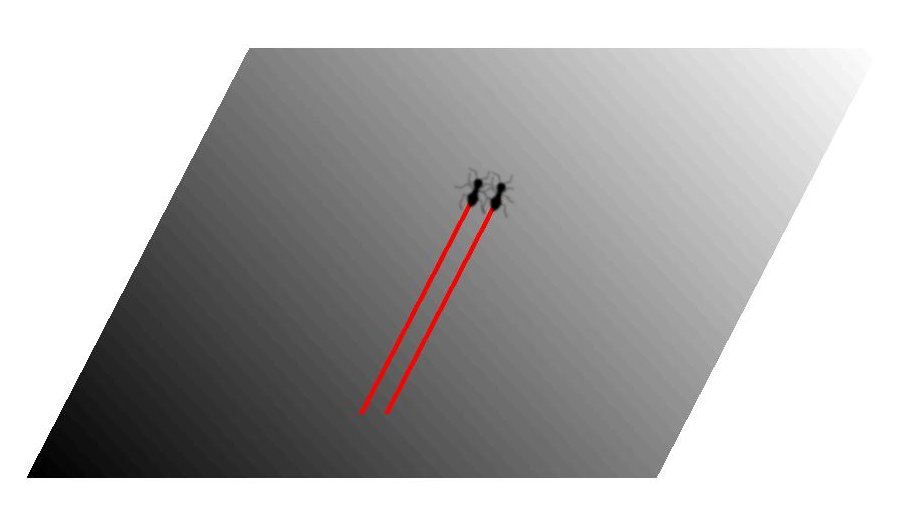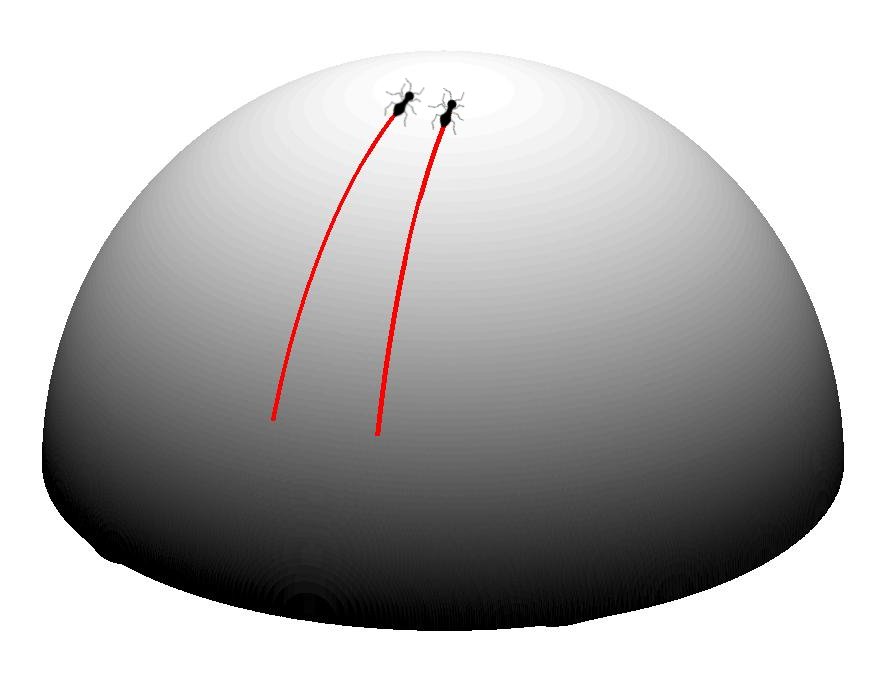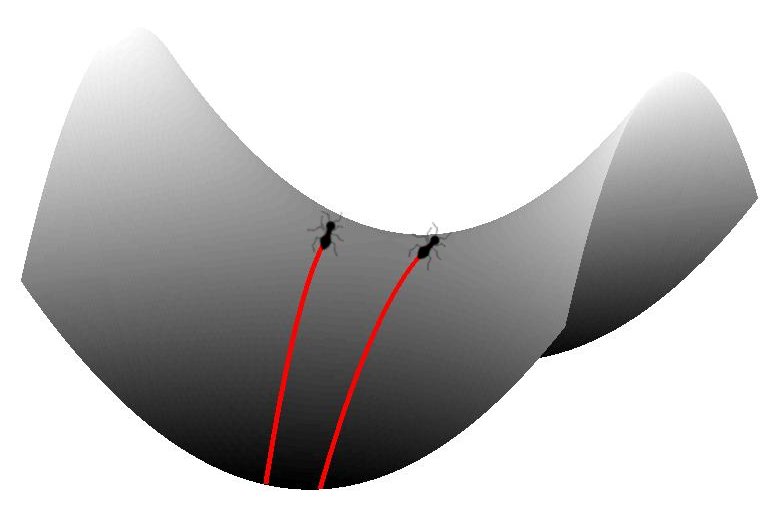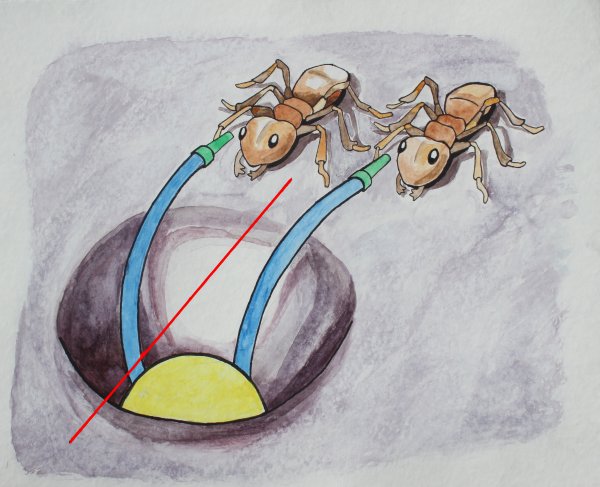Does this affect our friend the one dimensional ant? Not at all! Because the ant can only perceive his one dimension, he does not realize that his world is curved. From his point of view, space stretches out flat in front of him. Imagine that the one dimensional ants developed a great civilization, and became curious about the geometry of their universe. They built large telescopes, and invented rocket ships which flew very fast. If their telescopes were sensitive enough, and they peered far into the depths of the universe (looking around the circle formed by the rubber band), they would not find a brick wall marking the end of the universe, but instead might eventually look all the way around and see themselves (the backs of their heads)! If they set off in rocket ships, and traveled far around the rubber band, they might eventually end up at home again without ever having turned around! This might be quite confusing to the one dimensional ants, but for us three dimensional creatures the explanation is perfectly clear. But because the ants cannot get outside of the rubber band to see it, they don't understand how it can be circular in form.
 |
 |
 |
| Ants explore planes with zero (left), positive (middle), and negative (right) curvature. The three surfaces resemble a piece of paper, a globe, and a saddle. From the ants' perspective, they are always traveling along parallel lines on flat surfaces. [NMSU, N. Vogt] | ||
Does this affect our friend the two dimensional ant, who live on the piece of paper? Not at all! Because the ant can only perceive her two dimensions, she does not realize that her world is curved. From her point of view, space stretches out flat in front of her,, like the Midwest (flat and endless). Imagine that the two dimensional ants developed a great civilization, and became curious about the geometry of their universe. If their telescopes were sensitive enough, and they peered far into the depths of the universe (looking around the circumference of the sphere formed by the balloon), they might eventually look all the way around and see themselves! If they set off in rocket ships, and traveled far around the sphere, they might eventually end up at home again without ever having turned around! For us three dimensional creatures, the explanation is perfectly clear. But, again, because the ants cannot get off the surface of their sphere to see it, they don't understand how it can be spherical in form.
Does this remind you of the fifteenth century arguments about whether Columbus was going to fall off the edge of the Earth when he sailed West?
 |
| The intrepid ants explore their two dimensional curved universe. Because even light follows the curvature of space, their flashlights and telescopes follow the blue curved light path, rather than the red straight line. Because of this, they do not realize that their space is curved. These particular ants are actually exploring the local curvature of space around a super-dense object (perhaps a black hole), rather than tracing the overall curvature of their space, but the principle employed is exactly the same. [NMSU, S. Smith] |